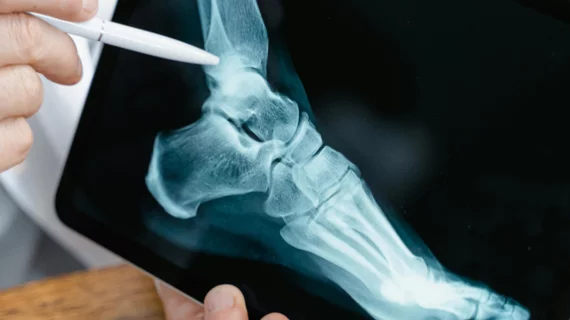AI model for ankle stress radiography could reduce radiologists’ workload by average of 70%
An artificial intelligence model for ankle stress radiography could potentially reduce radiologists’ workload by an average of 70%, according to a new study published Tuesday.
Interpreting such exams can be a “subjective and time-consuming task,” researchers detailed in Academic Radiology [1]. South Korean scientists aimed to address this challenge by training an AI model that can efficiently screen for negative cases on X-rays.
The technology is showing early promise, reducing radiologists’ hypothetical workload by 69% or more for anterior drawer tests (used to diagnose ACL tears) and 58% or more for talar tilt tests (assessing ankle stability).
“Despite its shortcomings, ankle stress radiography remains a routine imaging tool for patients with ankle pain or instability,” Seungeun Lee, MD, with the Department of Radiology at Seoul St. Mary's Hospital, and colleagues wrote May 14. “Interpreting ankle stress radiographs demands significantly more time and cognitive effort than other radiographs due to the need for precise measurements and meticulous comparison of both ankles. Therefore, reducing the number of ankle stress radiographs by more than half could significantly alleviate the workload of MSK radiologists.”
For the study, Lee et al. collected anterior drawer and talar tilt test radiographs from Seoul St. Mary’s and St. Vincent’s Hospital in Suwon, South Korea. They used expert ankle measurements as a reference point and trained the AI model on data from one hospital, testing it on three separate datasets. Three radiologists evaluated these test sets both with and without the help of artificial intelligence (focusing only on the AI-predicted positive cases).
AI assistance did not significantly impact agreement for any reader across all test sets, the authors reported. On its own, the artificial intelligence tool demonstrated fair to moderate agreement with the expert. Plus, it reduced radiologists’ hypothetical workload by a range of 68.8% to 89.2% for anterior drawer tests and 58.3% to 70.4% for talar tilt tests.
“In conclusion, our study demonstrates that a simple AI-powered negative screening tool can significantly reduce the hypothetical workload of ankle stress radiography by up to 70% without compromising radiologists' agreement with expert readers,” the authors wrote. “This study serves as a valuable proof-of-concept, showing the potential for constructing customized AI models for practical internal use.”
Read more about the results, including potential study limitations, in the official journal of the Association of Academic Radiology at the link below.

